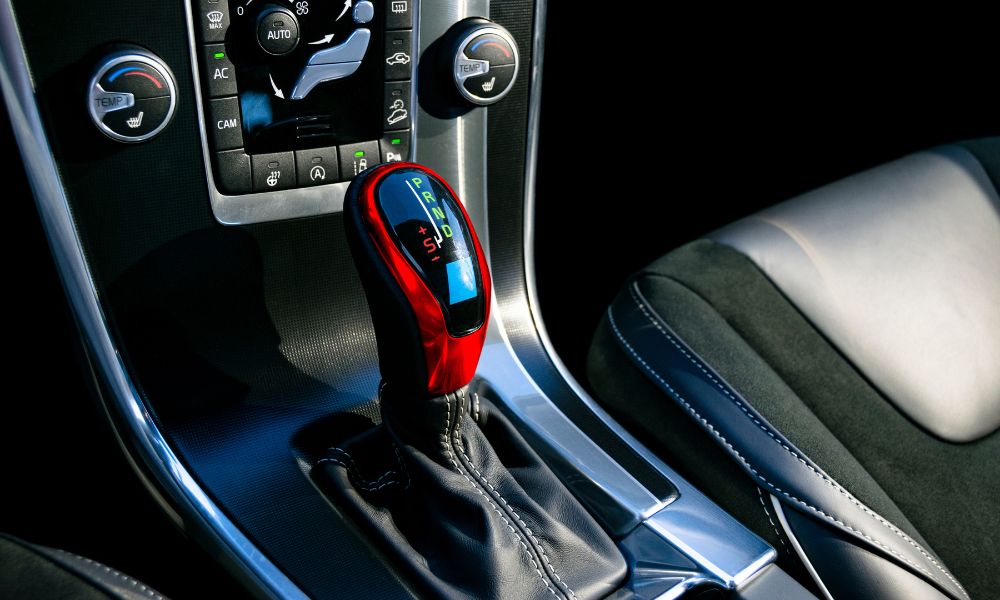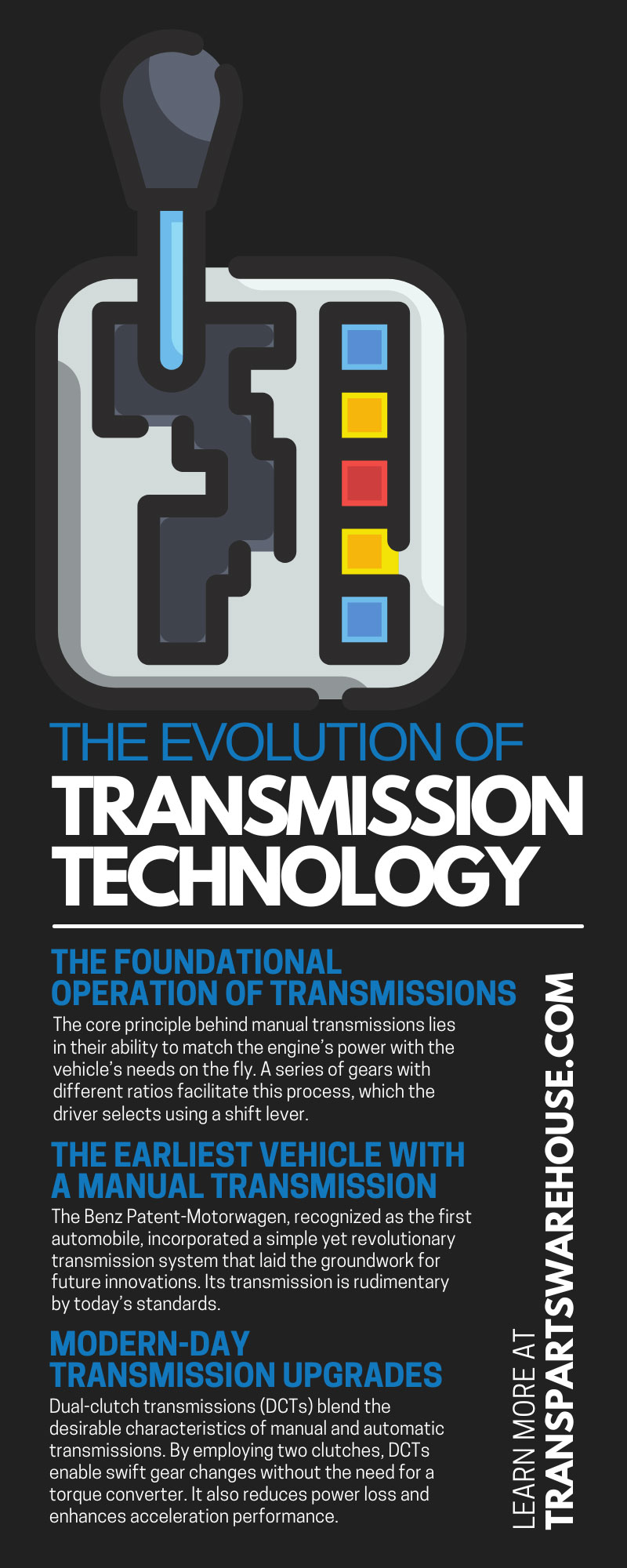
Modern-day transmissions didn’t always exist. It took thoughtful engineering to initiate the evolution of transmission technology. Technology, geographical barriers, and lack of worldwide communication limited automotive innovators around the world. However, these restrictions never stopped engineers from creating. Continue reading to learn how transmission technology evolved and where it stands today.
The Drive for Enhanced Mobility
The relentless pursuit of speed, efficiency, and reliability drives automotive engineers and inventors. Decades ago, the limitations of horse-drawn carriages and rudimentary steam engines propelled the quest for more practical and efficient means of transportation.
A fervent desire to push the boundaries of what was possible marked this period and laid the groundwork for the technological advancements that would eventually redefine mobility. The transition from animal power to mechanical propulsion was not just a leap in transportation technology; it was also a fundamental shift to a future with minimal constraints for human movement and economic activity.
The Foundational Operation of Transmissions
The core principle behind manual transmissions lies in their ability to match the engine’s power with the vehicle’s needs on the fly. A series of gears with different ratios facilitate this process, which the driver selects using a shift lever.
When shifting gears, the transmission system connects the engine to the drive shaft through a specific gear. It determines how much power reaches the wheels.
The clutch plays a crucial role in this process; it temporarily disconnects the engine from the transmission, allowing the driver to switch gears without causing damage. This orchestration of mechanical parts enables the vehicle to accelerate, decelerate, or maintain speed according to the driver’s input and road conditions.
The Earliest Vehicle With a Manual Transmission
The Benz Patent-Motorwagen, recognized as the first automobile, incorporated a simple yet revolutionary transmission system that laid the groundwork for future innovations. Its transmission is rudimentary by today’s standards.
Nevertheless, it featured a single-speed gear mechanism. This setup could translate engine power into forward momentum through a manual adjustment process, which represented a monumental step in automotive engineering.
Standout Transmission Features of the Benz Patent-Motorwagen
A few key transmission features have immensely contributed to the development of modern-day manual and automatic transmissions.
Manual Gear Selection
The Benz Patent-Motorwagen introduced the concept of manual gear selection. Drivers could control the vehicle’s speed and power output more directly than with previous vehicles. This feature laid the groundwork for the manual transmissions that would dominate automotive design for decades.
Gear and Chain Mechanism
The use of gear and chain mechanisms for power transmission was revolutionary in the 19th century. This system directly influenced the development of complex gear systems in later vehicles. It provided a more reliable and efficient means of transferring engine power to the wheels than the belt-driven or steam-powered systems that preceded it.
Multiple Gear Ratios
The Benz Patent-Motorwagen’s ability to switch between three forward gears was a significant advancement in automotive technology. It introduced the concept of gear ratios for better speed control and engine efficiency. This concept is the basis of the development of multi-speed transmissions that match engine output to the driving conditions.
Modern-Day Transmission Upgrades
Transmission technology has significantly progressed in the last several decades. Automatic transmissions took the automotive world by storm.
Continuously Variable Transmissions (CVT)
The continuously variable transmission (CVT) is a remarkable advancement in transmission systems. Unlike traditional fixed-gear setups, CVT utilizes a sophisticated belt and pulley mechanism to provide seamless acceleration. The innovative design boosts fuel efficiency and guarantees a smoother driving experience.
This transmission was part of the Subaru Justy in the late 1980s. Nowadays, it’s prevalent in compact cars and hybrids because it excels in maintaining the engine at its optimal RPM, maximizing fuel economy, and improving performance.
Dual-Clutch Transmissions
Dual-clutch transmissions (DCTs) blend the desirable characteristics of manual and automatic transmissions. By employing two clutches, DCTs enable swift gear changes without the need for a torque converter. It also reduces power loss and enhances acceleration performance.
Volkswagen’s renowned DSG system is a prime example of a DCT. This transmission elevated the driving experience with a sporty feel and granted drivers more control.
Automated Manual Transmissions (AMT)
AMTs, or semi-automatic transmissions, bridge the gap between manual and automatic. Instead of a conventional clutch pedal, AMTs use electronics and pneumatics to actuate the clutch and shift gears. This technology is ideal for urban driving because it combines the ease of operating an automatic with the control of a manual.
Electric Vehicle Transmissions
Combustion engine vehicles require multiple gears to adjust engine speeds. Electric vehicle (EV) transmissions feature single, fixed-speed units or incorporate a single-speed reduction gear. This streamlined design simplifies the driving experience with seamless speed transitions.
Additional State-of-the-Art Transmission Advancements
New transmission models aren’t the only components of transmission evolution. Without the existence of the electronic control unit, high gear shifts, and predictive shift algorithms, the advanced vehicle you know today wouldn’t exist!
Electronic Control Units (ECUs)
The development of ECUs marks an era of precision, efficiency, and adaptability. They are the brains behind transmissions and use advanced algorithms to orchestrate timing, torque, and speed of gear shifts.
The ECU continuously monitors data from a variety of sensors, including vehicle speed, throttle position, and engine load. Then, it conducts real-time adjustments to the transmission’s operations for incredible efficiency. Drivers will notice enhanced driving and optimal performance behind the wheel.
Increased Number of Gear Shifts
More gears allow for a closer ratio spread; the engine can operate closer to its optimal power band during different phases of driving. This improves acceleration and responsiveness for a smooth ride.
With more gears at the disposal of the ECU, there is greater scope for optimizing gear selection to suit driving conditions. The transmission can maintain a low RPM for great fuel efficiency or will select a lower gear for instant power.
Predictive Shift Algorithms
Predictive shift algorithms allow vehicles to maintain momentum around corners or when accelerating by selecting the most appropriate gear in advance. By anticipating the need for a gear change, the transmission can shift gears at the best time for various terrain and scenarios.
Predictive shift algorithms aren’t solely for enhanced performance and fuel economy. Vehicles with this technology have long-lasting transmissions thanks to the reduced frequency of gear shifts.
The expansive evolution of transmission technology, from the early days of clunky gear shifts to the seamless transitions in modern electric vehicles, is fascinating.
Automatic transmission repair kits and more from Transparts Warehouse will help you fix transmission issues correctly and quickly! Browse our products, see which ones suit your vehicle’s make and model, and contact us with any questions before purchasing.


